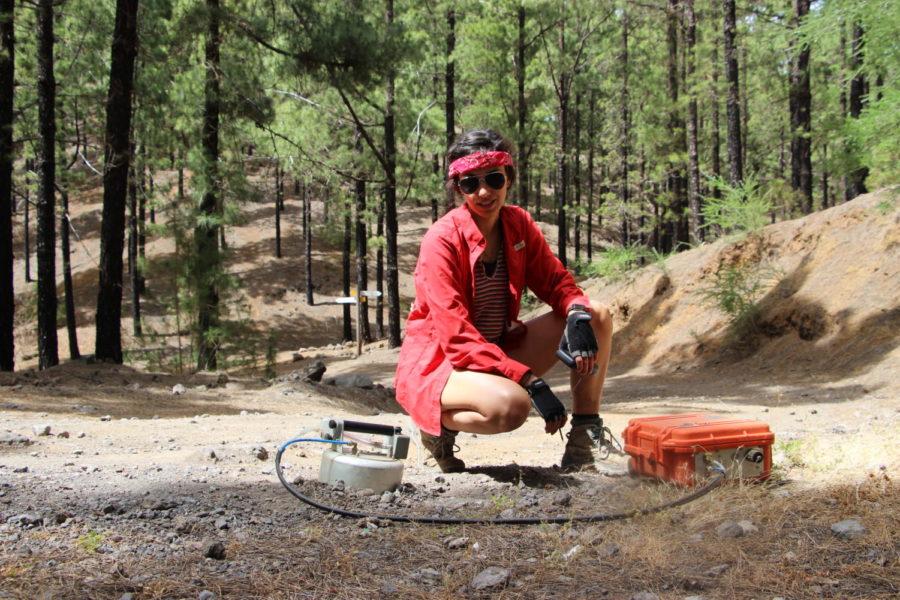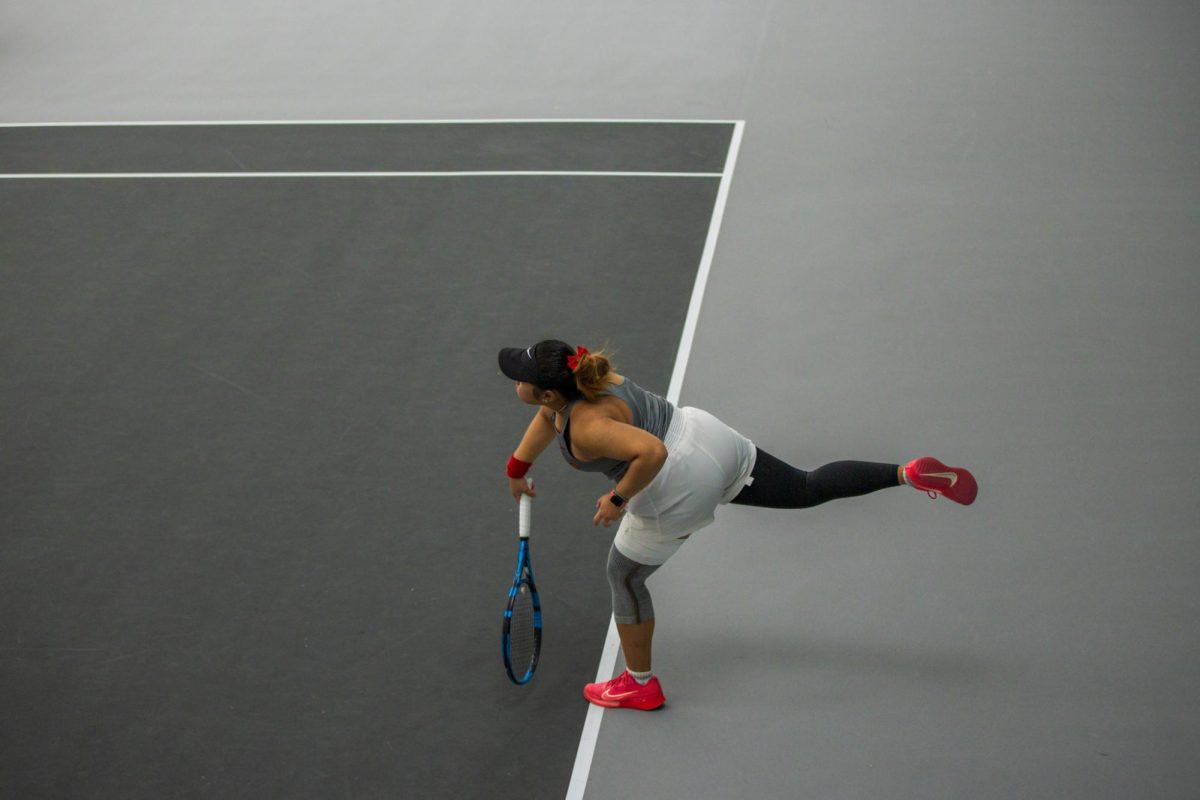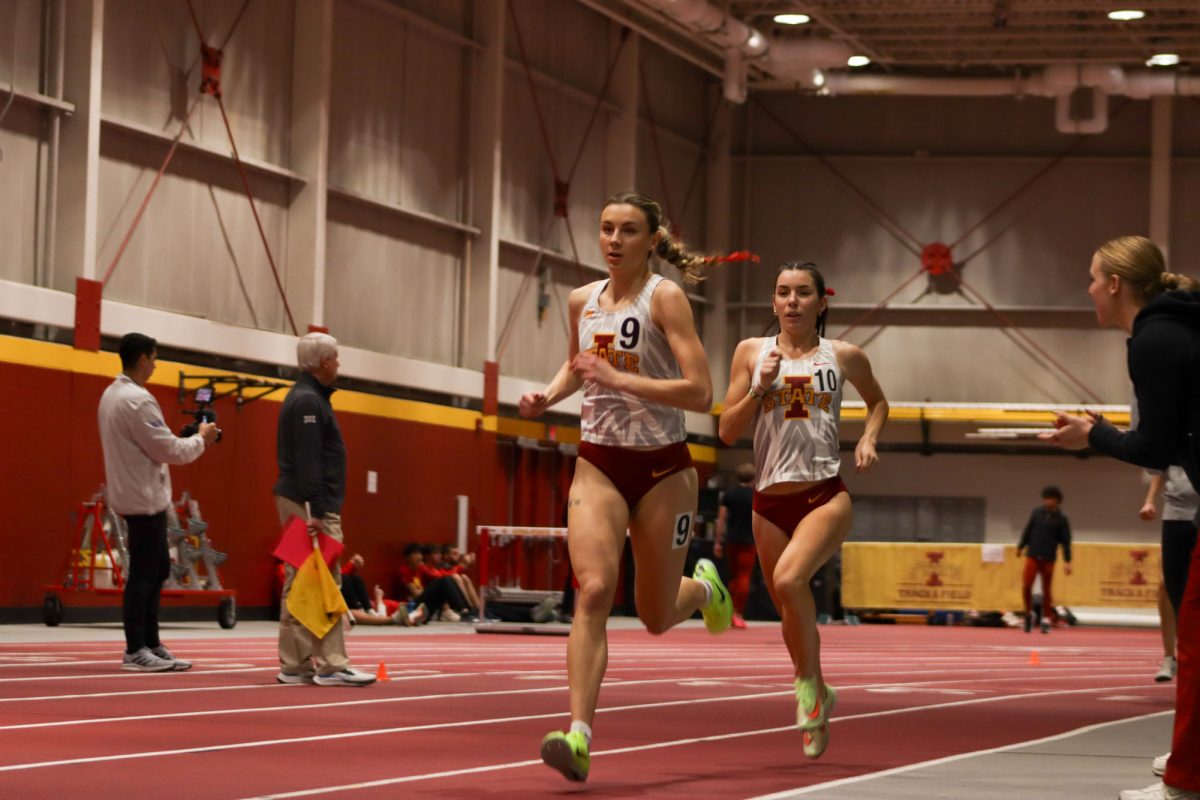Sophomore spends summer researching the world
August 27, 2018
Chanel Vidal was expecting to spend her summer in Ames. Instead, she spent it sailing across the Atlantic Ocean, interning in India and climbing an active volcano in Spain.
Vidal, sophomore in geology, applied for multiple summer research programs and scholarships. She was pleasantly surprised when she was awarded three opportunities to spend her summer studying, researching and traveling.
“They were all different programs or scholarship programs that I applied for, and I actually didn’t think I was going to get any of them,” Vidal said. “I was planning my schedule out that I’ll probably just stay at Iowa State and take some summer classes, and that is not what happened.”
Vidal left for her first research experience during finals week last spring. From there she boarded a research vessel as part of the Science, Technology, Engineering and Math Student Experiences Aboard Ships (STEM SEAS) program. STEM SEAS allows undergraduate students to get real life experience working on science aboard ships.
Vidal and eight other undergraduates left from Rhode Island to sail to Barbados. The cruise took a total of seven days. Originally, they were supposed to be gone for six days, but stormy weather extended the trip.
The weather did not help another obstacle Vidal and the crew had to face: seasickness.
“The boat wasn’t smaller than the wavelength, and it wasn’t bigger than the wavelength,” Vidal said. “So every time a wave would come it would just crash down, so that’s why the seasickness was so bad.”
Despite the seasickness, the students helped scientists to prepare an underwater camera. The camera was lowered into the ocean to study phytoplankton at different times throughout the day. Every 20 seconds, the camera would take photos to study the phytoplankton movement.
From there, Vidal made a quick trip back home to take a calculus final. Only a few days later she flew to India to intern at the Indian Institute of Technology (IIT).
To study at IIT, Vidal was named a U.S.S.N. Bose Scholar. According to their website, The S.N. Bose Scholars program helps “develop a dynamic and transformative student exchange program between premier institutions in India and the United States.”
Vidal had been to India before, but the trips were often short because of school and her mother’s work. But this time, not only did she have six weeks to spend, it would be the first time she would be going there alone.
“My mom is from India, which was a pretty big draw for me to go,” Vidal said. “I have never actually spent time there by myself, so I didn’t really know what it meant to be Indian.”
The main reason she wanted to go to India was because of the cultural experiences, Vidal said. But also because along the western coast of the country there is a large flood basalt region called the Deccan Traps.
“It’s a huge area of study for any geologists, so I said I need to go, I have to,” Vidal said.
Vidal spent her first week at IIT in one-on-one lectures and reading scientific textbooks and papers. Starting from her second week she was doing fieldwork such as measuring faults and observing sedimentary features.
On her first trip, Vidal had to overcome seasickness. This time around, she had to get used to India’s extreme temperatures.
“At night it would get down to 95 and still be over 100 with the heat index, and you don’t have air conditioning,” Vidal said.
After finishing her time in India, Vidal came back for another six days before setting her sights on the Canary Islands in Spain. For her research there, Vidal was awarded with a Dean’s High Impact Award and a James V. Aanstoos and Sarah A. Rajala Endowed Scholarship.
In Spain, Vidal and her group studied the rate of carbon dioxide emissions from Mount Teide, an active volcano located in the Canary islands. Their research focused on the northwest riftzone of the island and inside the crater of the volcano.
Although she spent most of her summer out of the country, Vidal said she didn’t miss home too much because she got to keep in contact with the person she loves the most: her mother.
“Home is my mom,” Vidal said.
“I got to stay connected with my mom throughout the entire thing, so I didn’t feel too homesick.”
Her future goals include graduate school and working for NASA. Since she is minoring in both mathematics and astronomy, she hopes that combination with her geology degree will help her gain the experience she needs to achieve that dream.
“I have always wanted to explore, but I didn’t really know space would be the goal,” Vidal said. “It’s the epitome of exploration I think.”
For her more immediate future, Vidal is ready to be back at Iowa State to expand upon her newfound knowledge and experiences.
“The opportunity to apply exactly what I learned in India, and continue building off of that here, I just think that’s so cool. Anything that I would want to do I think I could do here,” Vidal said. “Now what I have seen what all is out there for me, I am just really excited to be back here and work on my foundation.”







